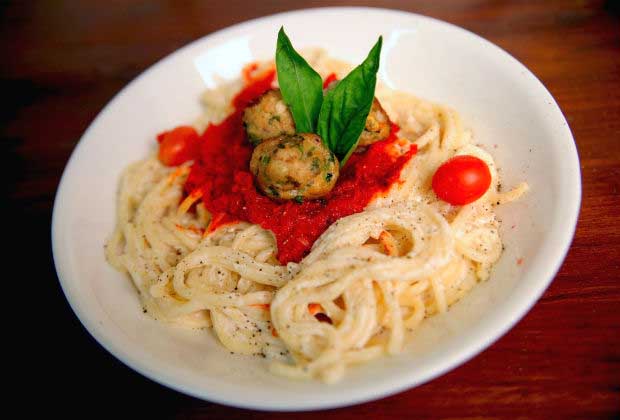World Pasta Day: 5 Fun Facts About Pasta
- By India Food NetworkLoading...
- | 25 Oct 2016 9:14 AM GMT
 X
X
 Make your own bowl of pasta today!
Make your own bowl of pasta today!
Pasta may be an Italian favourite, but it is almost a national dish in India. What's more, our kids are obsessed about it. The versatility of pasta is incredible for you can eat it baked, boiled, cooked or even fried. Add veggies, meats and fruits of your choice, season with herbs and cheese and you are sorted.
On World Pasta Day, we uncovered a few interesting facts about this Italian staple you may not know. Check them out.
Pasta was first made in China
On contrary to the popular belief, pasta was first eaten in China and not Italy. Even though the topic is debatable, many studies show that pasta was eaten in China as early as 5,000 B.C and noodles were not introduced in Italy until the 12th century.
ALSO WATCH: How To Make Spaghetti with Cherry Tomatoes & Basil Sauce
Canine-friendly
It is said that pasta can be fed to cats and dogs as it helps them get a glossy and healthy coat. So, next time, share some with your furry friend!
600 different shapes
There are over 600 different shapes of pasta worldwide according to the International Pasta Organization. Spaghetti, penne, fusilli and lasagna being some of the most popular ones in India.
Eating pasta makes you happy
Scientifically speaking, the carbohydrates in pasta increase the body’s production of serotonin or the 'Happy' hormone, leading you to a feeling of happiness. Another excuse to gorge on more pasta, right?
ALSO WATCH: Best Chicken Meat Balls With Spaghetti
Eaten by hand
Before the invention of cutlery, pasta was eaten by hand instead of a spoon or fork. It was also traditionally eaten plain, without any sauce or seasoning. This was much before sauce was invented.

India Food Network
Learn simple, easy-to-follow recipes from India's best home chefs, and explore fascinating stories about regional food.



